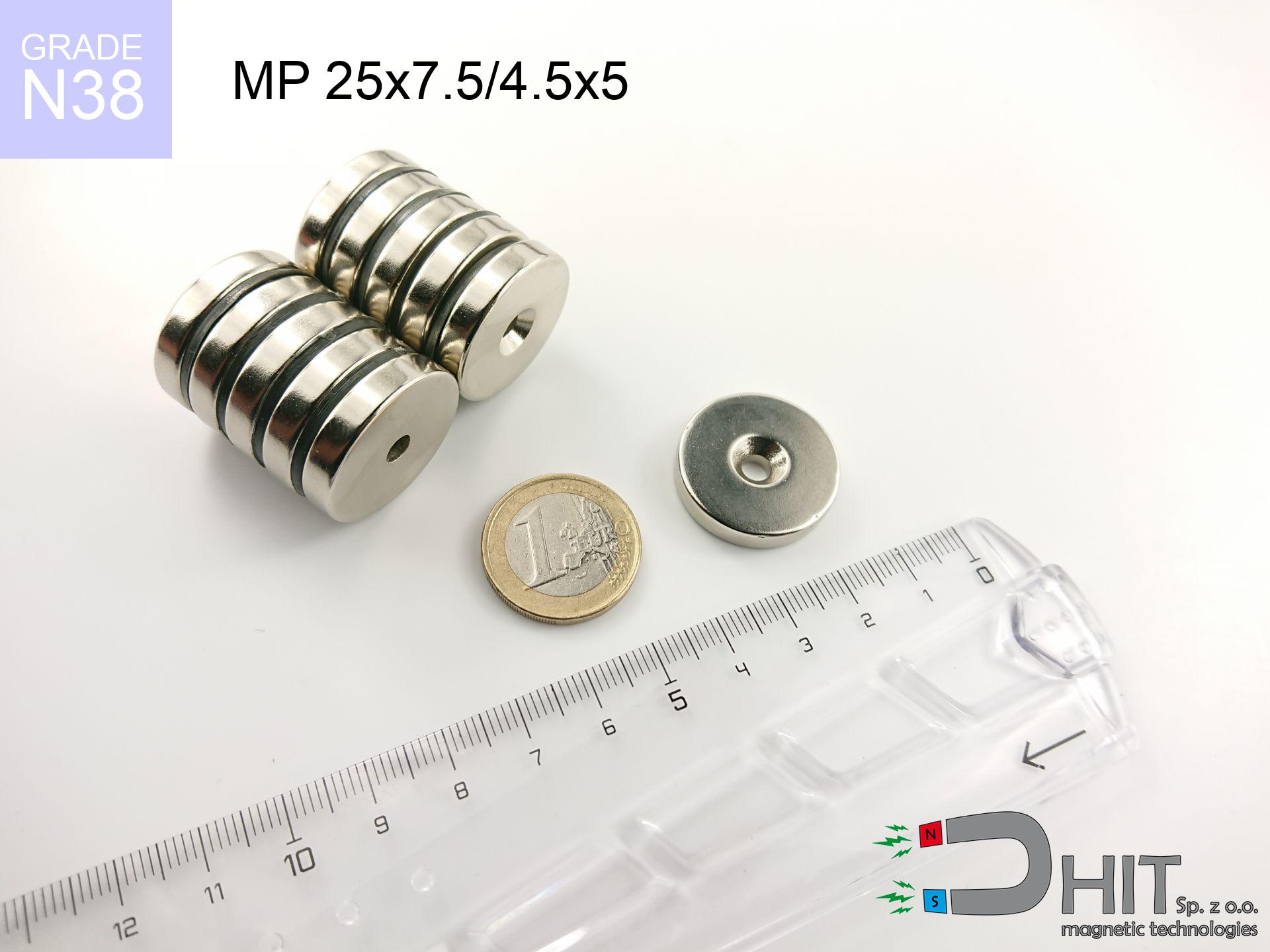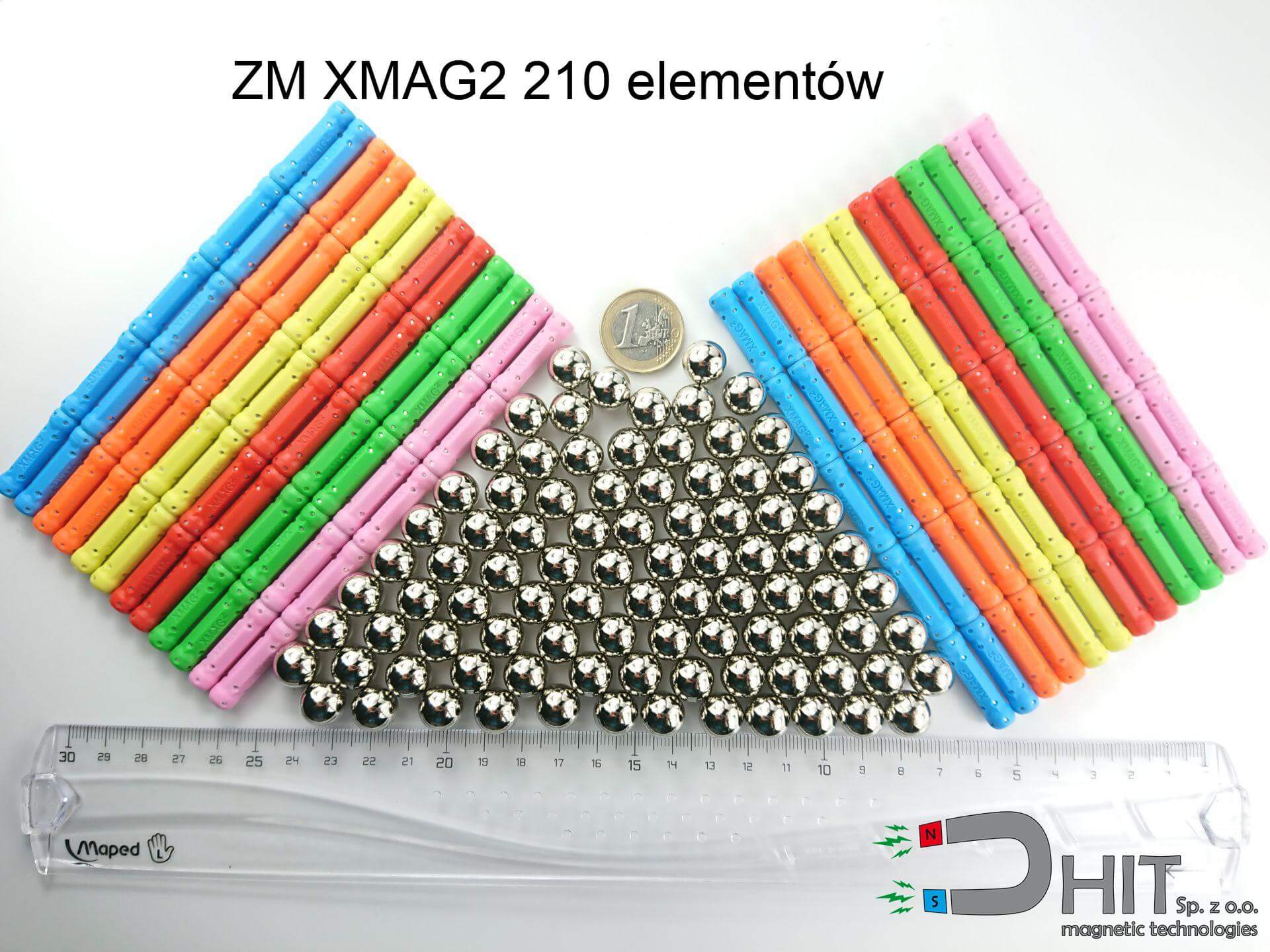MW 38x12 / N38 - cylindrical magnet
cylindrical magnet
Catalog no 010060
GTIN: 5906301810599
Diameter Ø [±0,1 mm]
38 mm
Height [±0,1 mm]
12 mm
Weight
102.07 g
Magnetization Direction
↑ axial
Load capacity
25.21 kg / 247.23 N
Magnetic Induction
331.00 mT
Coating
[NiCuNi] nickel
32.10 ZŁ with VAT / pcs + price for transport
26.10 ZŁ net + 23% VAT / pcs
bulk discounts:
Need more?Want to negotiate?
Give us a call
+48 888 99 98 98
or let us know by means of
form
the contact page.
Strength as well as shape of magnets can be estimated on our
magnetic mass calculator.
Orders placed before 14:00 will be shipped the same business day.
MW 38x12 / N38 - cylindrical magnet
Magnetic properties of material N38
Physical properties of NdFeB
Shopping tips
Moreover, even though neodymium is part of the strongest magnets, they are susceptible to corrosion in humid environments. Therefore, they are coated with a thin layer of epoxy to protect them from corrosion. It's worth noting that NdFeB neodymium magnets are about 13% lighter than SmCo magnets and, despite their power, easily break, which requires care during their handling. Therefore, any mechanical processing should be done before they are magnetized.
In terms of safety, there are several recommendations regarding the use of these magnets. They should not be used in acidic, basic, organic environments or where solvents are present, and also in water or oil. Additionally, they can damage data on magnetic cards and hard drives, although data deletion using a neodymium magnet is not always certain.
In terms of properties in different environments, neodymium magnets are sensitive to corrosion, especially in conditions of high humidity. Therefore, they are often coated with thin coatings, such as epoxy, to protect them from external factors and prolong their durability. High temperatures exceeding 130°C can cause a loss of their magnetic strength, although there are specific types of neodymium magnets that can tolerate temperatures up to 230°C.
As for risks, it is important to avoid using neodymium magnets in acidic conditions, basic environments, organic or solvent environments, unless they are properly protected. Additionally, their use is not recommended in wet conditions, oil, or in an environment containing hydrogen, as they may forfeit their magnetic properties.
Advantages and disadvantages of neodymium magnets NdFeB.
Besides their magnetic performance, neodymium magnets are valued for these benefits:
- Their magnetic field is durable, and after around 10 years, it drops only by ~1% (theoretically),
- They show strong resistance to demagnetization from outside magnetic sources,
- In other words, due to the shiny nickel coating, the magnet obtains an aesthetic appearance,
- They possess strong magnetic force measurable at the magnet’s surface,
- Thanks to their enhanced temperature resistance, they can operate (depending on the shape) even at temperatures up to 230°C or more,
- Thanks to the freedom in shaping and the capability to adapt to unique requirements, neodymium magnets can be created in diverse shapes and sizes, which broadens their functional possibilities,
- Key role in new technology industries – they serve a purpose in hard drives, electric motors, medical equipment and technologically developed systems,
- Compactness – despite their small size, they generate strong force, making them ideal for precision applications
Disadvantages of neodymium magnets:
- They may fracture when subjected to a sudden impact. If the magnets are exposed to shocks, it is suggested to place them in a steel housing. The steel housing, in the form of a holder, protects the magnet from cracks , and at the same time strengthens its overall robustness,
- Magnets lose pulling force when exposed to temperatures exceeding 80°C. In most cases, this leads to irreversible field weakening (influenced by the magnet’s structure). To address this, we provide [AH] models with superior thermal resistance, able to operate even at 230°C or more,
- Magnets exposed to humidity can corrode. Therefore, for outdoor applications, we suggest waterproof types made of plastic,
- Limited ability to create precision features in the magnet – the use of a mechanical support is recommended,
- Possible threat related to magnet particles may arise, especially if swallowed, which is notable in the context of child safety. Furthermore, small elements from these products might hinder health screening after being swallowed,
- Due to expensive raw materials, their cost is considerably higher,
Maximum holding power of the magnet – what contributes to it?
The given holding capacity of the magnet represents the highest holding force, determined in ideal conditions, namely:
- using a steel plate with low carbon content, serving as a magnetic circuit closure
- having a thickness of no less than 10 millimeters
- with a polished side
- with zero air gap
- under perpendicular detachment force
- at room temperature
Lifting capacity in real conditions – factors
Practical lifting force is determined by factors, by priority:
- Air gap between the magnet and the plate, since even a very small distance (e.g. 0.5 mm) can cause a drop in lifting force of up to 50%.
- Direction of applied force, because the maximum lifting capacity is achieved under perpendicular application. The force required to slide the magnet along the plate is usually several times lower.
- Thickness of the plate, as a plate that is too thin causes part of the magnetic flux not to be used and to remain wasted in the air.
- Material of the plate, because higher carbon content lowers holding force, while higher iron content increases it. The best choice is steel with high magnetic permeability and high saturation induction.
- Surface of the plate, because the more smooth and polished it is, the better the contact and consequently the greater the magnetic saturation.
- Operating temperature, since all permanent magnets have a negative temperature coefficient. This means that at high temperatures they are weaker, while at sub-zero temperatures they become slightly stronger.
* Lifting capacity testing was conducted on a smooth plate of optimal thickness, under a perpendicular pulling force, whereas under shearing force the holding force is lower. In addition, even a slight gap {between} the magnet’s surface and the plate decreases the holding force.
Precautions
Neodymium magnets are not recommended for people with pacemakers.
In the case of neodymium magnets, there is a strong magnetic field. As a result, it interferes with the operation of a heart pacemaker. Even if the magnetic field does not affect the device, it can damage its components or deactivate the entire device.
Keep neodymium magnets as far away as possible from GPS and smartphones.
Magnetic fields generated by neodymium magnets interfere with compasses and magnetometers used in navigation, as well as internal compasses of smartphones and GPS devices.
Neodymium magnets are the strongest, most remarkable magnets on earth, and the surprising force between them can surprise you at first.
On our website, you can find information on how to use neodymium magnets. This will help you avoid injuries and prevent damage to the magnets.
Neodymium magnets can demagnetize at high temperatures.
Even though magnets have been observed to maintain their efficacy up to temperatures of 80°C or 175°F, it's essential to consider that this threshold may fluctuate depending on the magnet's type, configuration, and intended usage.
Make sure not to bring neodymium magnets close to the TV, wallet, and computer HDD.
Strong magnetic fields emitted by neodymium magnets can destroy magnetic storage media such as floppy disks, credit cards, magnetic ID cards, cassette tapes, video tapes, or other devices. In addition, they can damage televisions, VCRs, computer monitors, and CRT displays. You should especially avoid placing neodymium magnets near electronic devices.
Magnets will attract to each other, so remember not to allow them to pinch together without control or place your fingers in their path.
If joining of neodymium magnets is not under control, at that time they may crumble and also crack. Remember not to approach them to each other or have them firmly in hands at a distance less than 10 cm.
Magnets made of neodymium are especially delicate, resulting in damage.
In the event of a collision between two neodymium magnets, it can result in them getting chipped. They are coated with a shiny nickel plating similar to steel, but they are not as hard. In the case of a collision between two magnets, there can be a scattering of small sharp metal fragments in different directions. Protecting your eyes is essential.
Dust and powder from neodymium magnets are flammable.
Avoid drilling or mechanical processing of neodymium magnets. Once crushed into fine powder or dust, this material becomes highly flammable.
Magnets should not be treated as toys. Therefore, it is not recommended for youngest children to have access to them.
Neodymium magnets are not toys. You cannot allow them to become toys for children. In such a situation, surgery is necessary to remove them. In the worst case scenario, it can result in death.
The magnet is coated with nickel - be careful if you have an allergy.
Studies clearly indicate a small percentage of people who suffer from metal allergies such as nickel. An allergic reaction often manifests as skin redness and rash. If you have a nickel allergy, try wearing gloves or avoid direct contact with nickel-plated neodymium magnets.
Safety rules!
To illustrate why neodymium magnets are so dangerous, read the article - How very dangerous are strong neodymium magnets?.






![SM 32x225 [2xM8] / N52 - magnetic separator SM 32x225 [2xM8] / N52 - magnetic separator](https://cdn3.dhit.pl/graphics/products/sm-32x225-2xm8-zix.jpg)


